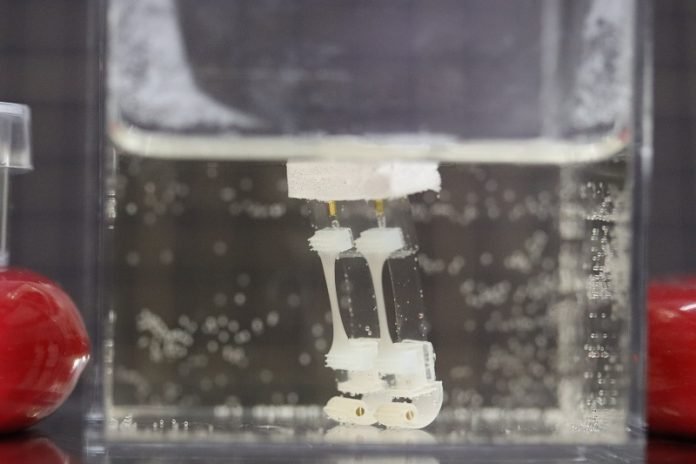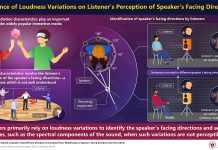
In Japan, scientists have created something amazing – a walking robot that’s powered by real muscle tissue!
This isn’t just any robot; it’s a special kind that mixes biology with mechanical parts, and it’s causing quite a stir in the world of robotics.
This groundbreaking work was shared in the journal Matter.
Professor Shoji Takeuchi from the University of Tokyo and his team are the brains behind this. They looked at how humans walk and used that as inspiration. The result?
A two-legged robot that’s a bit like a human-robot hybrid.
Here’s what’s really cool about this robot: it walks and even turns around, thanks to muscles. Before this, muscle-powered robots could move straight or swim, but turning sharply was tough. This robot changes that game, making turns to avoid obstacles.
So, how did they do it? They built a robot that can stand upright underwater.
It has a foam part on top to float and weighted legs. The robot’s body is made of a flexible silicone rubber material, perfect for bending and moving with the muscle tissues.
These muscles aren’t from a living creature; they’re grown in a lab. The team attached these muscles to the robot’s legs. When they give the muscles a tiny electric shock, they contract, lifting the leg up.
Then, when the shock stops, the leg steps forward. By doing this to each leg in turn, every five seconds, the robot walks at a very slow pace – about 0.002 miles per hour.
To turn, they shock one leg while the other stays still. For example, to make a left turn, they shock the right leg repeatedly. In just over a minute, the robot can turn 90 degrees.
Right now, the scientists have to move the electrodes by hand to control the legs, which is a bit slow. But they have plans to make this process automatic, which should speed things up.
They’re also thinking of adding joints and beefier muscle tissues to the robot. This would allow it to make more complex and powerful movements. But first, they need to figure out how to keep the muscle tissues healthy and working, especially if the robot is going to work outside of water.
The team was thrilled when they first saw their robot walk. It might seem like a small achievement, but it’s actually a huge leap forward in the world of biohybrid robots. This robot could be the start of something really big in robotics, blending biology and mechanics in ways we’ve never seen before!



